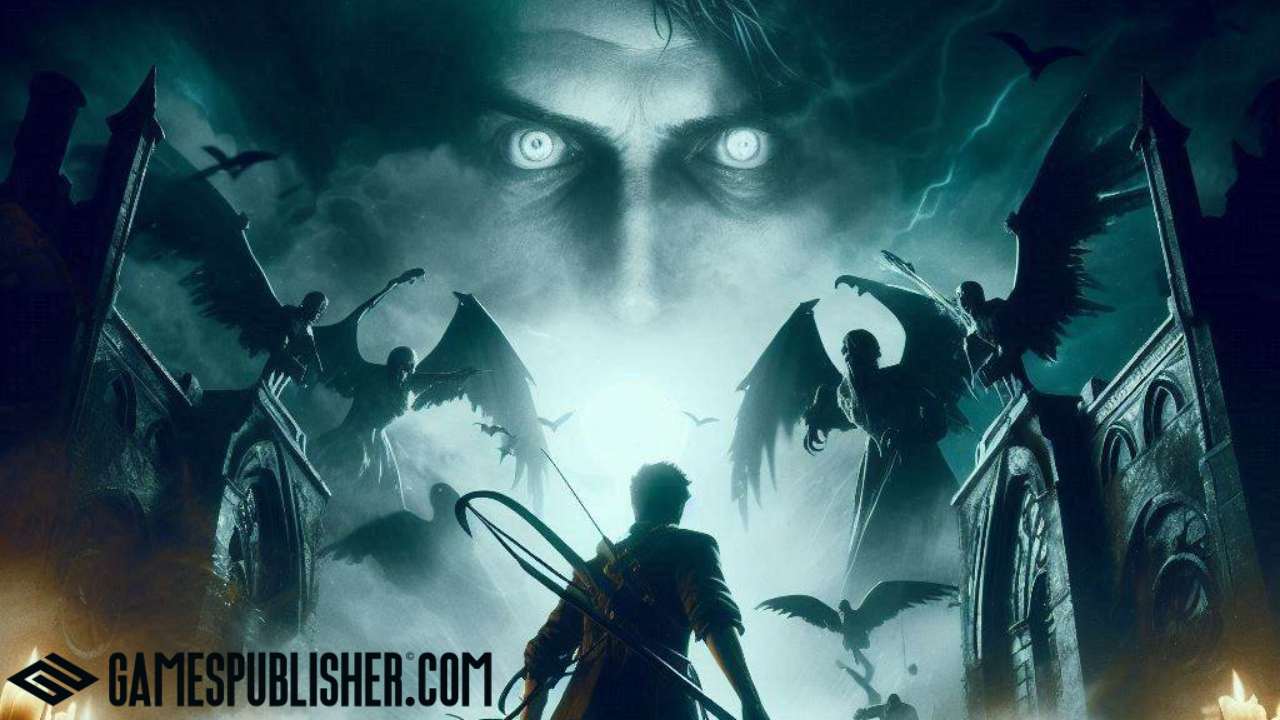Horror and thriller games are unique in their ability to evoke solid psychological responses. Fear, anxiety, and suspense are just a few of the emotions they elicit, creating a truly distinct experience for gamers.
Therefore, understanding the history of horror games offers crucial insights for anyone in the gaming industry.
It reveals what makes a horror game truly terrifying and how these games have evolved into some of the most impactful experiences in gaming.
Join us as we uncover the history of horror games, from the very first terrifying titles to the rise of indie horror games and the best the genre offers.
Ultimately, we’ll explore the evolution of horror games on PC and the trends shaping the future of scary and creepy indie games.
Early Influences: Horror and Thriller in Other Media
Think of horror and thriller games as the next chapter in a long history of scary stories. They take what we love from books and movies and bring those chilling elements to life in a whole new way.
Those classic horror stories that still send shivers down the spine. Indeed, authors like Edgar Allan Poe, H.P. Lovecraft, and Mary Shelley also significantly impacted horror games.
In fact, early game developers looked to these masters of the macabre for ideas, borrowing their chilling tales of psychological horror and cosmic dread to shape the first generation of horror games.
Think about those classic horror movies with their creepy visuals and heart-stopping scares. Films like Nosferatu and Frankenstein had a significant impact on horror games, especially regarding their visual style.
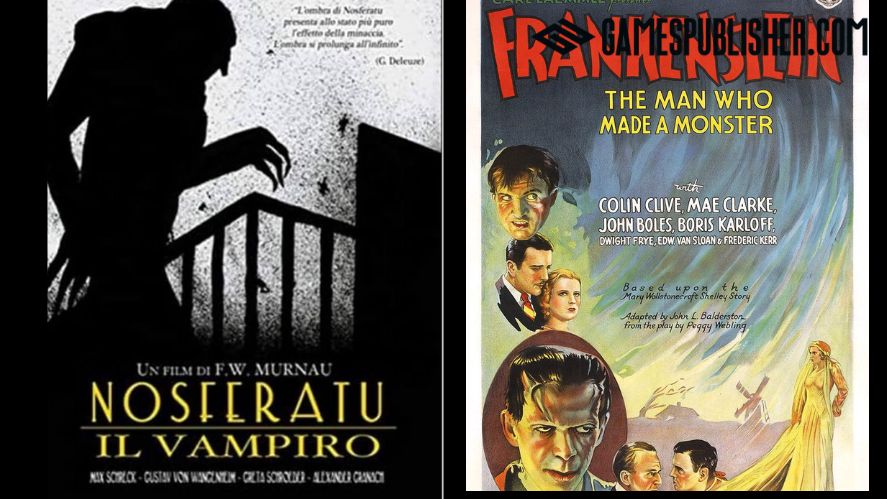
Of course, horror games PC wouldn’t be the same without those classic jump scares pioneered by early horror cinema.
The influence of psychological thrillers, especially the films of Alfred Hitchcock, can be seen throughout the horror game genre. Hitchcock understood how to manipulate audiences, building suspense through psychological tension and paranoia.
Consequently, many modern horror games have adopted this approach, focusing on a slow-burn approach to fear rather than relying on jump scares.
This is particularly true for indie horror games, which often prioritize atmosphere and dread to create a genuinely unsettling experience.
Those early influences from literature and film planted the seeds for the horror games we know and love today.
However, how did those seeds first sprout in the digital world?
The First Horror Video Games
With the stage set by those chilling tales and terrifying films, it was time for video games to enter the spotlight. Early game developers, armed with pixels and code, eagerly embraced the challenge of bringing fear to this new interactive medium.
However, these early attempts, while simple compared to today’s standards, were vital in establishing the core elements of the horror game genre.
One of the earliest examples of a horror game is Haunted House for the Atari 2600. While graphically simple, it introduced fundamental horror game mechanics like navigating dark environments and using jump scares.
Players controlled a pair of disembodied eyes navigating a haunted house, searching for hidden objects while avoiding dangerous creatures. The game may seem rudimentary now, but it was a significant step in bringing the horror genre to the interactive world of gaming.
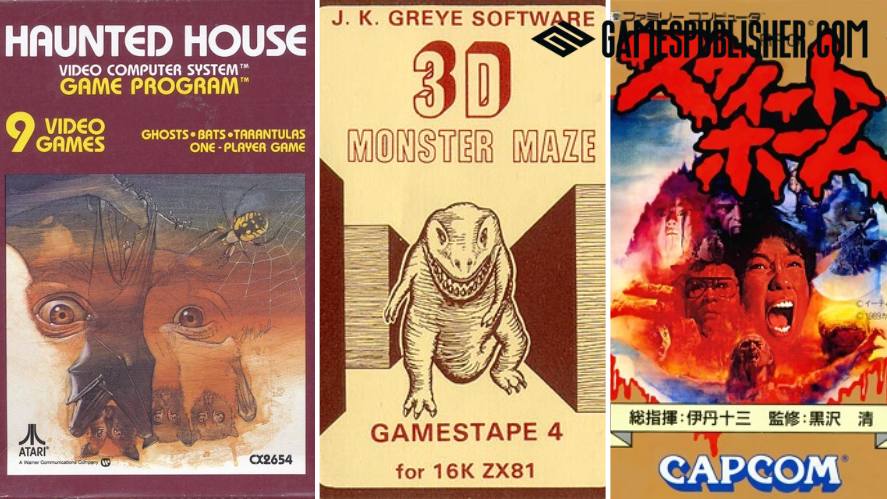
Similarly, 3D Monster Maze released for the Sinclair ZX81, is often credited as one of the first games to generate fear in players indeed. Using 3D graphics, the game placed players in a maze pursued by a relentless Tyrannosaurus Rex.
The simple visuals, combined with the constant threat of being hunted, created an intense and claustrophobic experience. The game demonstrated the potential of video games to evoke genuine fear and anxiety, paving the way for more sophisticated horror games in the future.
Then, back in 1989, a game called Sweet Home crept onto the NES and quietly revolutionized horror games.
Based on a Japanese horror film, this game wasn’t just about jump scares and spooky visuals. Sweet Home threw players into a haunted mansion, forcing them to explore, solve puzzles, and manage resources to survive.
It was a groundbreaking title that laid the groundwork for survival horror, even influencing the iconic Resident Evil series.
The Birth of the Survival Horror Genre: Resident Evil (1996)
While early horror games experimented with scares and atmosphere, it was CapCom’s Resident Evil in 1996 that genuinely revolutionized the genre.
This groundbreaking title solidified the survival horror formula, blending atmospheric horror with action-adventure elements and puzzle-solving, creating a truly terrifying and unforgettable experience.
In fact, Resident Evil wasn’t just a game-changer. It practically wrote the book on survival horror.
This horror game PC classic solidified CapCom’s reputation as a top video game publisher and inspired a whole generation of horror games.
Resident Evil introduced several fundamental mechanics that became staples of the survival horror genre.
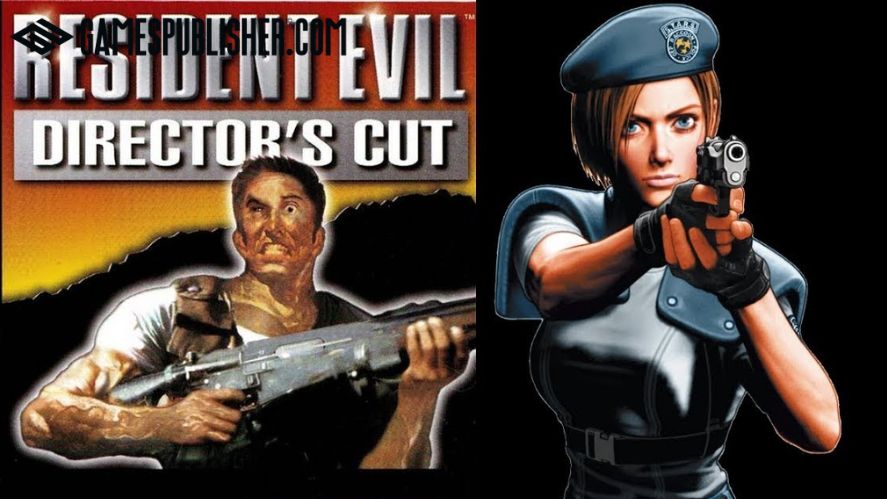
For example, limited resources, such as ammunition and healing items, forced players to make strategic decisions and heightened their sense of vulnerability.
While the fixed camera angles can sometimes be frustrating, they create a cinematic feel and often obscure the player’s field of vision, adding to the suspense and fear.
The slow-paced gameplay further amplified the tension, forcing players to carefully explore their surroundings and conserve resources.
Undeniably, the impact of Resident Evil on the video game industry cannot be overstated. It influenced countless other iconic franchises, including Silent Hill and Fatal Frame, and even revitalized the Alone in the Dark series.
Even today, horror games PC and indie horror games continue to draw inspiration from the groundbreaking formula established by Resident Evil.
Thriller Games: A Focus on Suspense and Psychological Fear
Some horror games go for the quick scare with gore and jump scares, but thriller games play the long game. They build suspense, create a chilling atmosphere, and tap into those deep-seated fears that keep you up at night.
This approach has led to some genuinely groundbreaking indie horror games and horror games PC that have redefined the genre.
Silent Hill (1999)
Remember that feeling of unease you get when watching a truly unsettling film? That’s what Silent Hill aimed for.
Konami’s Silent Hill series, especially the first game back in 1999, was a masterclass in psychological horror.
Instead of relying on jump scares – this horror game dove deep into your anxieties with its surreal environments, disturbing imagery, and a story that just wouldn’t let you go.
Silent Hill used everything from eerie fog to unsettling radio static to create a constant dread. Ultimately, it left a lasting impact on the horror game scene, especially on those creative indie horror games that followed.
Alan Wake (2010)
Remedy Entertainment’s Alan Wake is a chilling thriller that takes a different approach to horror.
Instead of relying on gore and jump scares, it builds suspense through its unique light and shadow mechanics and a gripping narrative. In this game, players use light sources to fight off terrifying creatures, creating a constant struggle between light and darkness.
As a result, Alan Wake demonstrated that horror games could effectively utilize psychological tension and atmospheric storytelling to appeal to a broader audience, including those who might not typically enjoy horror games PC focused on traditional scares.
The Influence of Indie Games on Horror/Thriller
While big studios like CapCom were busy shaping the survival horror scene, indie game developers were cooking up their brand of terror.
Without the pressure of AAA budgets and expectations, indie horror games could take more risks, experiment with unique mechanics, and explore unconventional approaches to fear.
Amnesia: The Dark Descent (2010)
Frictional Games’ Amnesia: The Dark Descent is a prime example of horror indie game innovation.
This first-person survival horror title stripped players of any means of combat, forcing them to rely on stealth and evasion to survive encounters with terrifying creatures.
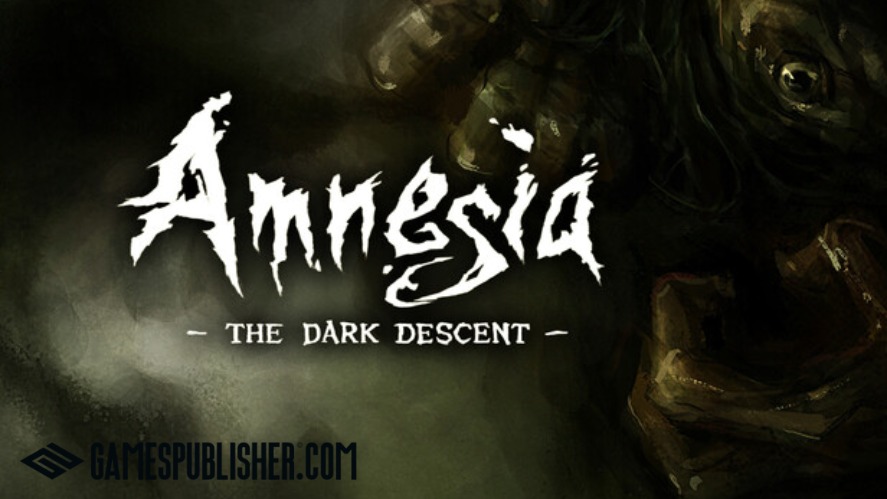
This emphasis on helplessness created a genuinely unsettling and vulnerable experience.
Furthermore, Amnesia also utilized environmental storytelling to build a prosperous and disturbing narrative, encouraging players to piece together the story through exploration and observation.
The game’s success proved that scary indie games could deliver truly terrifying experiences with innovative mechanics and a focus on psychological horror.
Slender: The Eight Pages (2012)
Slender: The Eight Pages proved that indie horror games could terrify players with the bare minimum.
This free-to-play game, based on the internet legend of the Slender Man, used simple graphics and chilling sound design to create a genuinely unsettling experience.
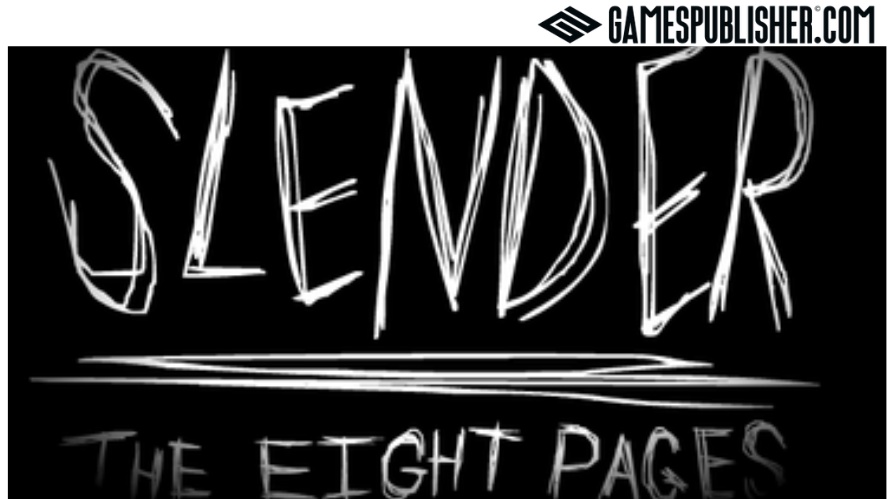
Players had one goal: collect eight pages scattered throughout a dark forest while being stalked by the terrifying Slender Man.
Despite its simplicity, its viral marketing and simple gameplay made it a massive hit, showing the power of indie game development and internet culture.
Slender proved that horror games didn’t need fancy graphics or complex mechanics to be compelling, atmosphere and psychological tension were enough to scare the players off.
Read More: Top Horror Game Publishers Shaping the Genre
Evolution of Horror and Thriller Games in Modern Times
Technology never stands still, and neither does the horror genre.
Horror PC games and console experiences have been dramatically impacted by new advancements, particularly in virtual reality and the rise of cinematic storytelling.
VR Horror Games
Virtual Reality (VR) has revolutionized gaming, offering unprecedented levels of immersion.
Horror games, in particular, have embraced this technology, transforming familiar experiences into something truly terrifying.
Resident Evil 7: Biohazard in VR, for instance, is no longer just a game; it’s a visceral encounter with the horrors of the Baker family mansion. Every creaking floorboard, every distant scream, becomes a chilling reality.
Similarly, Phasmophobia in VR elevates the ghost-hunting experience to a new level of intensity.
Shadowy figures and disembodied voices feel intensely real, making every investigation a test of nerves. This heightened sense of presence and realism is what makes VR a perfect match for the horror genre.
These two titles are prime examples of how VR can breathe new life into existing horror games pc, attracting players eager for a more immersive and terrifying experience.
Narrative-Driven Thriller Games
Modern horror games are also pushing the boundaries of storytelling.
Games like Until Dawn and The Quarry offer cinematic, narrative-heavy experiences where player choices directly impact the story and determine the fate of characters.
This interactive narrative approach adds layers of suspense and tension as players grapple with difficult decisions and face the consequences of their actions.
These games blur the lines between video games and interactive films, offering a unique and engaging experience for fans of horror and thriller games.
Key Game Design Elements in Horror and Thriller Games
Creating a truly effective horror game isn’t a one-person show. It’s a symphony of elements working together – the chilling atmosphere, the clever mechanics, and the way the tension builds and releases.
Let’s examine how these key ingredients combine to make horror games on PC and other platforms captivating.
Atmosphere and Sound Design
Atmosphere is king in the world of horror games. It’s what separates a decent scare from a truly unforgettable experience.
For instance, think about it: the chilling music that sends shivers down your spine, the eerie silence that makes you hold your breath, the sudden creak that makes you jump out of your skin.
That’s the magic of sound design and it’s crucial for creating a truly immersive and terrifying horror game.
Mechanics of Fear
Atmosphere is vital, but clever game mechanics can dial up the fear factor even further.
Imagine navigating a claustrophobic maze with limited visibility, every creak and groan making you jump.
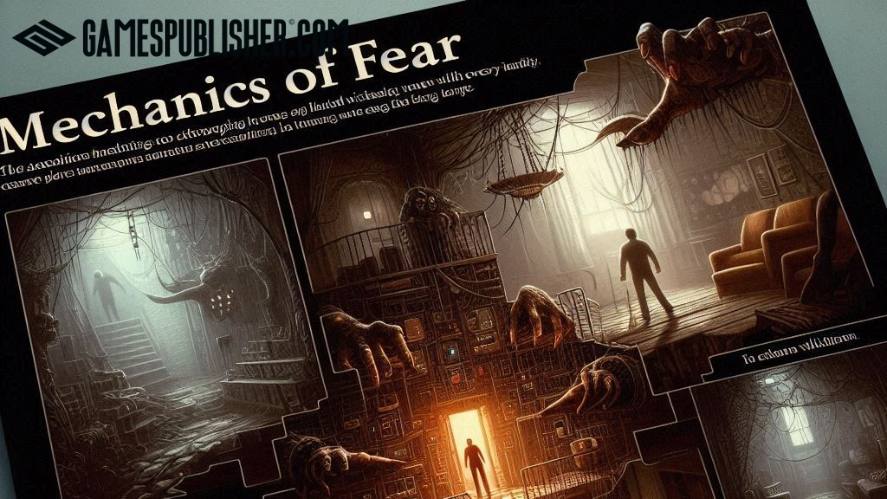
Or picture this: a sudden whisper in your ear, followed by the chilling realization that you’re not alone.
These are the kinds of mechanics that make horror games PC genuinely terrifying. By playing with our senses and expectations, these mechanics can manipulate our emotions and create an unforgettable experience.
Pacing and Suspense
Mastering pacing in a horror game is like conducting a symphony of fear.
It’s about slowly building tension, using environmental cues, vulnerable characters, and scarce resources to transform a simple horror theme into a psychological thriller.
For example, think of those quiet moments filled with anticipation in indie horror games, punctuated by sudden bursts of fear or action.
That’s the art of pacing, keeping players on the edge of their seats without overwhelming them with cheap jump scares.
Essentially, it’s about creating a nuanced and impactful experience that sticks with them long after the game is over, a hallmark of the best horror games on the PC.
In the end, crafting a genuinely terrifying horror game is like walking a tightrope. It’s a delicate balancing act where atmosphere, mechanics, and pacing must perfectly harmonize. Too much of one, and the whole thing falls apart.
But when these elements come together just right, developers can create horror PC games and other titles that are both terrifying and unforgettable, leaving players with nightmares that linger long after the credits roll.
Conclusion
From the chilling tales of Poe and Lovecraft to the cinematic scares of early horror films, horror and thriller games have a rich and terrifying history.
Indeed, understanding this evolution is crucial for any game developer or video game publisher hoping to create truly engaging and frightening experiences.
By learning from the past, they can better understand the mechanics of fear, the importance of atmosphere, and the power of psychological tension.
But the journey of horror and thriller games is far from over. New technologies like VR offer incredible new levels of immersion, while narrative-driven experiences like Until Dawn blur the lines between games and interactive films.
Overall, as technology advances and our imaginations run wild, the potential for horror and thriller games to surprise, engage, and terrify is limitless.
We can’t wait to see what terrifying experiences await us in the future of gaming!
Loading survey...

